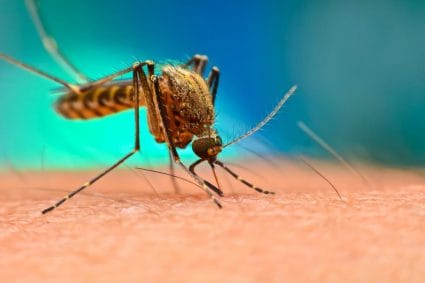
Bats play a crucial role in our ecosystem, but they can become a nuisance when they invade our homes or yards. They can cause structural damage, bring health hazards, and create noise disturbances that disrupt our peace. However, with the right strategies, you can keep bats out of your yard effectively and humanely. Here’s an in-depth guide on how to achieve this.
To keep bats out of your yard, install bright lights as bats are sensitive to them, use natural repellents like peppermint, eucalyptus, and cinnamon, install noise or visual deterrents, cover fruit trees with netting, and seal potential roosting spots. If bats still find a way in, avoid direct contact, give them space, provide an escape route, and if necessary, capture and release them safely. Prevent future encounters by sealing entry points, cleaning affected areas, installing a bat house, using bat alarms, and regularly inspecting your home.
Understanding Why Bats Invade Yards
Before you can effectively keep bats out of your yard, it’s essential to understand why they are attracted to residential areas in the first place. Bats typically seek out residential yards for the following reasons:
- Food source: Bats primarily feed on insects. If your yard has a high insect population, it can attract bats.
- Shelter: Bats often roost in dark, secluded spaces such as trees, eaves, or porch ceilings. If your yard offers such spaces, it may attract bats.
- Loss of natural habitat: With increasing urbanization, bats may lose their natural habitats and seek alternative roosts in residential areas.
- Water source: Bats need water to survive. If your yard has a water source, such as a pond or birdbath, it may attract bats.
Effective Methods to Deter Bats
Now that we understand why bats may be attracted to your yard, let’s explore some effective methods to deter them:
- Install bright lights: Bats are nocturnal and sensitive to bright lights. Installing bright garden and porch lights can deter bats from entering your yard.
- Use natural repellents: Bats dislike certain smells like peppermint, eucalyptus, and cinnamon. Using these scents around your yard can deter bats. You can create a spray using these essential oils mixed with water and spray it around your yard.
- Install noise or visual deterrents: Bats prefer stillness and quiet. Placing noisemakers or moving visual elements in your yard can make it less appealing to bats.
- Cover fruit trees: If you have fruit trees in your yard, placing netting over them will limit bats’ access to food, making them more likely to seek sustenance elsewhere.
- Seal potential roosting spots: Ensure that there are no openings or cracks in your home’s exterior where bats can roost. Seal any gaps with caulk, expanding foam, or other appropriate materials.
Handling Bat Encounters Safely
Despite our best efforts, bats may occasionally find their way into our yards. If this happens, it’s important to handle the situation safely for both you and the bat:
- Avoid direct contact: Never touch a bat with your bare hands as bats can carry diseases like rabies. Always wear gloves if you must handle a bat.
- Give the bat space: Bats usually don’t attack humans unless threatened. Maintain a safe distance and allow the bat to find its way out.
- Provide an escape route: If a bat is trapped, open exterior doors and windows while closing interior ones to guide the bat out.
- Capture and release if necessary: If the bat doesn’t leave on its own, wait until it lands, then gently trap it using a small box or container. Release it outside, away from your home.
Preventing Future Bat Encounters
To prevent future bat encounters, consider taking the following steps:
- Seal entry points: After the bats have been removed, identify and seal all possible entry points to prevent them from coming back.
- Clean affected areas: Restore any damaged insulation or wood in the attic and repair any exterior issues around their entry points.
- Install a bat house: Providing an alternative roosting spot for bats can encourage them to stay away from your home.
- Use bat alarms or white noise machines: These devices produce sounds that can scare bats and deter them from returning.
- Regularly inspect your home: Check your attic and other potential roosting areas periodically for signs of bat activity.
Bats are essential to our ecosystem, but they can become a nuisance when they invade our homes or yards. It’s important to handle bat encounters safely and humanely, and take steps to prevent future invasions. With these strategies, you can effectively keep bats out of your yard and live in harmony with these beneficial creatures.
Frequently Asked Questions
What time of the year are bats most active?
Bats are most active during the warmer months of the year, typically from spring through fall. They go into hibernation or migrate to warmer areas during the winter.
Can I use chemical repellents to deter bats?
It’s not recommended to use chemical repellents for bats. Many are ineffective, and some can be harmful to bats and other wildlife. It’s best to use natural deterrents and exclusion methods.
I found a baby bat in my yard, what should I do?
If you find a baby bat, it’s best not to touch it. The mother bat might be nearby and can return to retrieve it. If the baby bat is still there after a few hours, contact a local wildlife rehabilitation center for advice.
Are all bats protected by law?
The legal protection of bats varies from place to place. In many parts of the world, bats are protected by law and it is illegal to harm or kill them. It’s always best to check with local wildlife agencies for specific regulations in your area.
Do bats really drink blood?
While the vampire bat, found primarily in Central and South America, does feed on blood, the majority of bat species eat insects or fruit. Bats found in residential areas in most parts of the world are usually insectivores.










